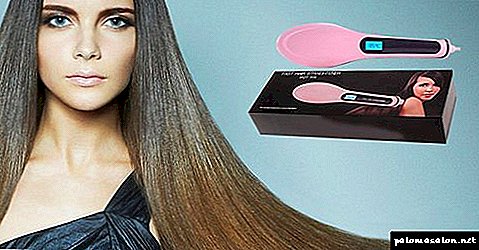Every woman from an early age tries to follow her hairstyle, inventing new images. At first they are braids, tails and haircuts, then they smoothly turn into coloring, highlighting and other procedures, from which the hair can be very hard. Over time, hair begins to break, dull and even fall out.
To restore the hair after curling or dyeing, as well as to prevent seasonal loss, you can use various cosmetics. Masks and balms, which include colorless henna, perfectly help hair loss. Reviews of these drugs can be found in publications that are devoted to beauty and health, cosmetics and useful tips.
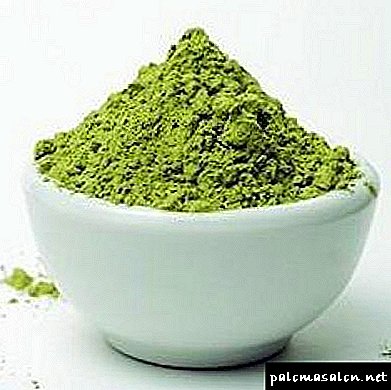 Many use henna, but not everyone knows what it is. In fact, Iranian colorless henna is a natural product of plant origin, widely used in cosmetology. In addition to the beneficial effects on the hair and scalp (it is used for hair loss, dandruff, itching, allergies to cosmetics), it also has a good effect on the skin. There are a large number of face and body masks, which also include colorless henna. Reviews written after the application of these funds speak about their effectiveness and availability (henna is an inexpensive product, grown in sufficient quantities to satisfy the market).
Many use henna, but not everyone knows what it is. In fact, Iranian colorless henna is a natural product of plant origin, widely used in cosmetology. In addition to the beneficial effects on the hair and scalp (it is used for hair loss, dandruff, itching, allergies to cosmetics), it also has a good effect on the skin. There are a large number of face and body masks, which also include colorless henna. Reviews written after the application of these funds speak about their effectiveness and availability (henna is an inexpensive product, grown in sufficient quantities to satisfy the market).
Henna is also used in its pure form (in the form of a powder), on the basis of which natural natural hair dyes are made. By itself, henna gives the hair a copper-red shade, and in combination with other components there can be a lot of options: from red to chestnut and even black. 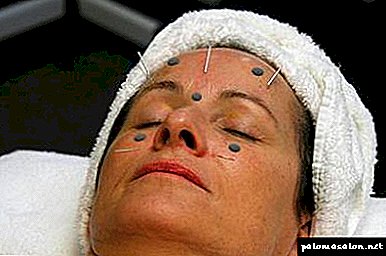 For therapeutic purposes, colorless henna is used, reviews of it, however, say that after applying and subsequent dyeing the hair, even such henna can give a yellow tint to blondes, so owners of dyed hair should have light shades with caution.
For therapeutic purposes, colorless henna is used, reviews of it, however, say that after applying and subsequent dyeing the hair, even such henna can give a yellow tint to blondes, so owners of dyed hair should have light shades with caution.
To strengthen the hair, you can simply purchase colorless henna in a dry form (the cheapest option) at a pharmacy, make a mask of it yourself and apply it on your hair before you wash your hair. There is a mass of recipes for masks, which include colorless henna, reviews after their use can usually be read immediately after the recipe itself. Some simply make it "mush", diluted with warm water, and used as a mask.
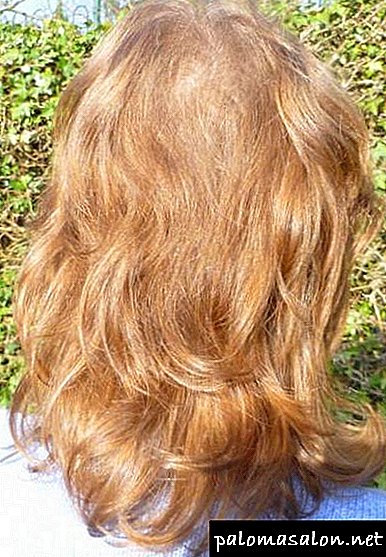 True, henna has a couple of flaws (without them, probably, there is not a single remedy). Besides the fact that its use can affect hair color when dyeing (or highlighting), henna is very poorly washed out, since it is a grain of a plant. Sometimes it is necessary to simply comb it under the shower, especially owners of long hair. But for the sake of luxurious strong hair you can spend the extra 10-15 minutes under the shower. In addition, the procedure is sufficient to carry out once a week (or 2 times a month).
True, henna has a couple of flaws (without them, probably, there is not a single remedy). Besides the fact that its use can affect hair color when dyeing (or highlighting), henna is very poorly washed out, since it is a grain of a plant. Sometimes it is necessary to simply comb it under the shower, especially owners of long hair. But for the sake of luxurious strong hair you can spend the extra 10-15 minutes under the shower. In addition, the procedure is sufficient to carry out once a week (or 2 times a month).
It turns out that most of the problems associated with hair loss, perfectly solves simple colorless henna - the reviews speak for themselves. But blondes to henna (even colorless) should be treated with caution, having checked in advance if she leaves some shade on her hair (however, owners of blond hair need to be careful with any means that can leave a memory in the form of an undesirable shade).
What is henna?
The word itself is of Arabic origin and is used as a name for natural paint, which is obtained from the leaves of Lawsonia - a member of the family of Derbennikov. It grows in the tropical climate of North and East Africa and India. In appearance, it resembles “our” lilac: white and pink small blossoms with wide leaves. Lawsonia is often used in the formation of park and garden design. The most intense properties have upper leaflets. Of them make dyes for tattoos. The rest of the plant also has a purpose: they thoroughly dry and dye their hair on the basis of it.
The stems, which, in fact, have no coloring properties, are used to make colorless henna. It is a universal remedy for all hair, eliminating fragility, dandruff, irritation, itching, loss, conditioning and nourishing curls.. It is believed that henna also gives a chic volume, making the hair thick and lush, so colorless henna reviews have the most positive.
A wide range of henna application is surprising: it can be used to make industrial dye, and essential oils based on it are used in perfumery. But, as always, a good product on the market appear his "evil twins." They have enough henna: from poorly made henna derivatives to white henna, which has absolutely nothing in common with natural henna. Another thing - colored henna.
Features colored henna
Colored henna is a means not only for strengthening curls, but also for staining them. But it is necessary to apply it with caution after oxidative dyes, since the main tone of the hair may change. Shampoo, in which there is henna for hair shades can create the most diverse, while through several applications strands have an intense shine and rich color. Such shampoo often dark curls gives the shade of mahogany, and light brown - golden or red color.
And yet, if you decide to leave the ranks of those who use chemical dyes, you need to learn how to dye hair with henna correctly. In order not to worry about the consequences and to know for sure that this procedure will not disappoint, gently carry out a test in advance: a thin strand is taken, a small amount of powder is diluted, the mixture is applied over the entire length of the strand. The necessary amount of time is waited, after which the henna is washed off. To see the result, the curls must first be dried. And then, judging by the color obtained, in case of a positive result, you can safely dye your hair completely.
The most popular shades are brown, black, chestnut, red.
But the final shade directly depends on the structure of the hair. This means that in different parts of the head of hair where the hair structure is different, henna for hair shades can also give different. All due to the fact that the density of the hair varies, and therefore the total time of absorption of the paint is different. However, if the need has become a bright and saturated color, henna can be kept all night.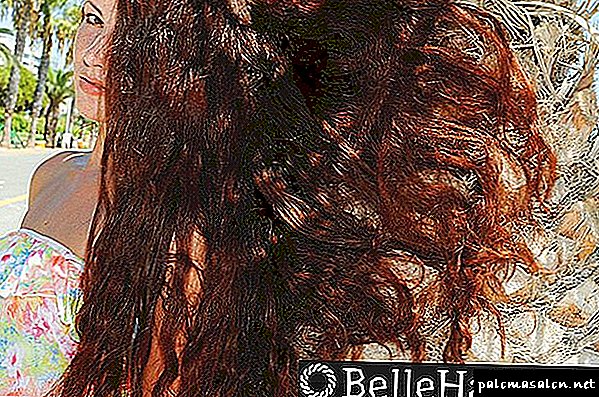
Preparation and dyeing process
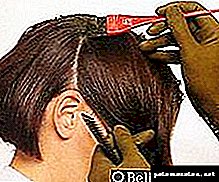 Before painting, it is recommended to trim the bitten ends of the hair. The fact is that they absorb the paint more intensively and as a result, the tips will be very different from the rest of the hair. Curls should be clean, combed and slightly moist. You should also prepare polyethylene gloves if you, of course, do not want to purchase the same tone of nails and skin with a new shade of hair. Those who often use henna for hair reviews have left the following. For locks of medium length, approximately shoulder length, 3 bags are required. In general, it is about 45 grams of powder. It is placed in an enamel or plastic container and filled with boiling water, which in turn improves the effect of the dye. The resulting compound is stirred until a homogeneous "gruel".
Before painting, it is recommended to trim the bitten ends of the hair. The fact is that they absorb the paint more intensively and as a result, the tips will be very different from the rest of the hair. Curls should be clean, combed and slightly moist. You should also prepare polyethylene gloves if you, of course, do not want to purchase the same tone of nails and skin with a new shade of hair. Those who often use henna for hair reviews have left the following. For locks of medium length, approximately shoulder length, 3 bags are required. In general, it is about 45 grams of powder. It is placed in an enamel or plastic container and filled with boiling water, which in turn improves the effect of the dye. The resulting compound is stirred until a homogeneous "gruel".
To give the curls a pleasant shine, you can add a teaspoon of lemon juice to the mixture.. Henna should be applied fairly quickly to avoid different shades. The initial parting is done, “gruel” is applied on its middle and is evenly distributed. Partings should be done quite often: every 0.5-1 cm. Thus, most of the hair is gradually processed. The remaining curls on the back of your head will have to be painted blindly. After that, part of the hair is neatly colored around the face, and special attention is paid to the roots.
It is necessary to use all prepared mix. After application, gently massage the hair with your fingers. In order to speed up the process of dyeing, it is recommended to wear a plastic cap or bag, and warm it all with a towel. Also referring to those who used henna for hair reviews they left, had a few recommendations.
In order for the paint from under the cap the paint does not leak on the neck, you need to put a napkin in this area. Well, if you already got dirty, apply a thick cream on this area.
If you are using henna for the first time and do not know how long the paint should be kept, you need to know the following. For light curls you need about 3 minutes to get a golden shade, 6 minutes will make your hair reddish, and the hour will be given a fiery red color. Based on this, henna for hair reviews is positive, when for light strands the procedure lasts no more than half an hour, and for dark curls - up to three hours.
Colorless henna
The stereotypes of those who believe that henna can only dye - colorless henna for hair will break with ease. It has the same useful properties as the color, but is suitable for any hair color and does not change color at all.
Some may wonder: why use henna if you don't need to dye your hair? It is wonderfully combined with other components for prophylactic masks. Besides, colorless henna eliminates dandruff, improves blood circulation of the scalp, prevents hair loss. Therefore, the henna for hair reviews from people who had these problems, but successfully coped with them.
If you have excessively greasy curls, regular use of masks with colorless henna normalizes sebum. The healing properties of henna have long been used in the cosmetic field. Even a small content of it in the same shampoo strengthens the hair. And the natural base is much more to itself than a variety of chemical compounds. At the same time, colorless henna for hair shades will not give your hair, which allows you to use all its derivatives without fear.
At home, colorless henna is fairly easy to use: 100 grams of the powder is diluted with one and a half cups (300 ml) of hot water. The mixture is kneaded to the complete absence of lumps and applied to clean, barely wet hair. Next, put on a plastic cap. The mask is aged from 30 minutes to an hour. Those representatives who were not satisfied with the monotony of colorless henna for hair reviews left with additional components. Often it is all sorts of essential oils, dairy products, solutions of vitamins, cosmetic clay or crushed herbs.
Contraindications
In home use, colorless henna has practically no contraindications. Only allergic reactions and intolerance can be dangerous.
It is very important not to use henna directly after dyeing or perming. Since the components of the coloring agents are opposite in their action, the result can be unpredictable. Unfortunately, colorless henna for hair reviews had such. But this is purely the fault of ignorant ladies.
Summarizing, we can say that the idea of henna, as soon as the coloring matter is long gone. A lover to change hair color, henna will be much more useful than a lot of harmful colors, which are even worse in durability.
Persian henna
For those who are not familiar with henna, we inform: this plant comes from the Middle East, used for dyeing the skin and hair from ancient times. Lush henna briquettes are made from high quality Persian henna and do not contain any synthetic dyes. For their production, henna leaves are dried, then ground into powder and mixed with cocoa butter, after which they are formed into briquettes. Other natural ingredients are also added to produce different shades: brown (Brun), chestnut (Marron), black (Noir) and red (Rouge).
Indigo and ground coffee are added to “Brown” henna to get a deep chocolate brown color, to “Kashtanovaya” - ground coffee and lemon juice, giving a bright nutty color with autumnal shades, a large amount of indigo is added to “Black” black, "Red" contains lemon juice, giving a bright red hue.
Check before using
An allergic reaction to henna is very rare and its manifestations are relatively weak - the scalp may itch a little. Exposure to PFD (paraphenylene diamine) can cause allergic reactions such as redness, burning, itching, and irritation of the scalp, face, and neck.
A skin test before using henna will allow you to ensure that you are not allergic to lavson (a red-orange pigment present in henna leaves). You just need to put a small amount of henna on the skin and wait about an hour.
Since 2011, EU legislation has obliged manufacturers to put on the packaging of hair dyes warnings about the danger of allergic reactions and recommendations for carrying out a skin test before each use of dye. But Dr. White is confident that these warnings are not noticeable enough.
The same risks apply to hair dyeing in salons, although most respected stylists insist on performing a skin test before applying dye to hair. This precaution is reasonable, but is usually performed only before the first use of a new color. This practice is dangerous, because there is a possibility of a serious allergic reaction to the paint, which has already been used repeatedly and did not cause any problems. Moreover, the results of skin tests do not give a full guarantee if they are not performed in conditions of an allergic clinic. Dr. White explains: “Hair dye testing can detect individuals with pronounced allergies, but there is no evidence that following these industry-standard procedures will reveal people with less severe allergies.”
In most cases, the reaction will not be serious, but even a weak reaction means a high risk of a more serious reaction later, so anyone who has experienced at least some irritation is advised to completely avoid synthetic paints.
Allergy UK believes that synthetic hair dyes contain so many chemicals that almost any of them can cause an allergic reaction. Paraphenylenediamine (PFD) is considered the main suspect, about which the European Scientific Committee on Consumer Goods refers to about 80% of allergic reactions. PFD is an organic compound used in almost all persistent and semi-resistant paints to “fix” the dye, that is, to prevent it from being washed off. Higher concentrations of the substance are found in dark brown and black inks, and at the moment its use is the most effective method of dyeing gray hair. Other chemicals are also used to make hair dyes safer.
Among them, para-aminodiphenylamine (PADA), para-toluene diamine (PTDA) and 3-nitro-p-hydroxyethyl-aminophenol, used mainly in light and red colors. But they can also cause increased sensitivity of the skin, that is, they are not completely safe, they are just less dangerous.
Dr. White warns: "If you need complete security, do not use them."
Safe alternative
In addition to dyeing hair, Lush henna cares for hair, since cocoa butter and essential oils give the hair a shine and a pleasant smell.These ingredients help to create a protective layer of natural color on the hair, giving weight to unruly hair, reduce electrification and tangling, and help soothe and soften curls.
You will get healthy shiny dyed hair without the use of hazardous chemicals.
You will not find synthetic hair dyes in Lush, as we are sure that natural henna is an effective and safe coloring method, more beneficial to the body and hair.
Varieties
The salons offer several procedures that allow you to create curls, get the effect of natural curls and at the same time do not harm the hair. Among the most popular and in demand are:
This is an Italian technique that quickly gained immense popularity. Such a procedure as a perm is an entirely worthy alternative. First of all, because it does not cause harm. Used complexes have a sparing effect. As a result, beautiful light curls are formed, which look natural and natural. The absence of aggressive chemicals in the composition made this drug popular among women of different ages. Even with loose strands, it is applicable.
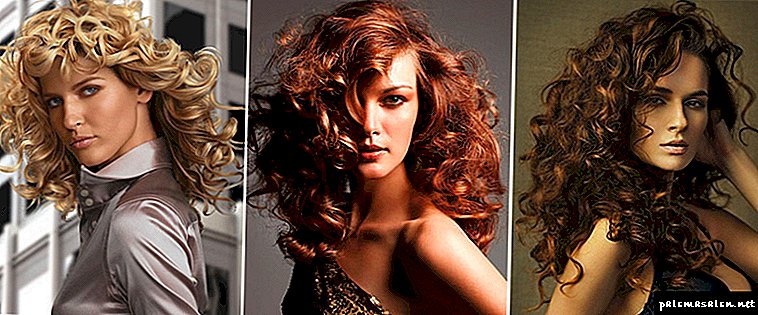
In the composition there are natural ingredients. In particular, there is an extract of bamboo, which has a protective effect and prevents damage to the hair structure. The unique composition adds shine, heals and increases the density, giving additional volume. At the same time, harm for curls is excluded.
Japanese waving
This is the most gentle and delicately acting alternative to hair chemistry. Apply drugs that contain:
- betaine (moisturizes and nourishes, nourishes the hair),
- keratin complexes (makes curls strong, resilient and elastic),
- silicon cystine (fixes the shaped curl).
The Japanese perm technique is not suitable only if the strands are badly damaged or too thick and long. For thick long braids, this technique is not effective, since it will not allow the formation of distinct distinct curls.

Silk wave
This name has another technology that is also in great demand. She is harmless. In addition, it has a healing effect. The basis of the compositions used are natural silk proteins. Affect carefully, filling the curls with missing elements. However, it is worth considering that this kind of curling provides not too long result. Curls are kept for about 2-3 months depending on the initial state and natural structure. At the same time, re-doing this perm is not recommended more than once every 6 months. Otherwise there is a risk to spoil the hair.
Hair styling by carving
The technique, which involves the use of special complexes. They do not have as harmful effects as acid and alkaline drugs. This provides a lasting effect. Its duration depends on the length and condition of the hair. Carving is not recommended to perform on painted strands. Especially, if used henna, basma or other natural coloring compositions.
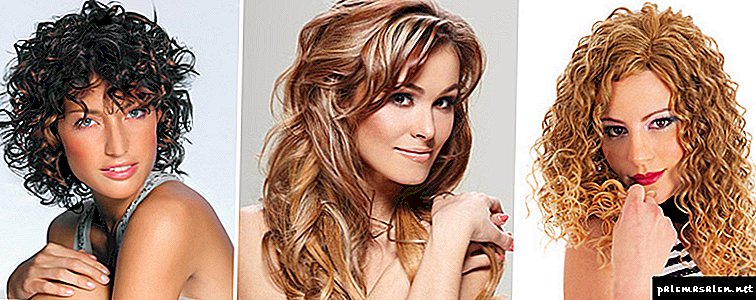
The use of henna for hair
According to trichologists, henna is one of the safest dyes for hair and, moreover, a source of many substances useful for hair. Replacing her usual paint, you can immediately get several pluses:
- Strengthening bulbs. If you are worried about hair loss, monthly henna staining or a course of masks with its colorless variety will certainly help
- Reduction of fat production. Owners of greasy hair have to wash them every day. Henna will dry the scalp due to tannins in its composition. Over time, the sebaceous glands normalize,
- Fading dandruff. After the first coloring, you will notice that the amount of unkempt white flakes at the hair roots has noticeably decreased. After a few procedures, the skin is cleansed completely,
- Fragility reduction. Henna contains vitamins C, K, B, essential oil, and tannins filling the hair shaft make it stronger. The strands will become more rigid, but they will stop breaking. A thin protective film formed by the dye on the hair will prevent cutting the tips and protect against aggressive external factors,
- Volume. Due to the same film, the hairs become thicker, which means more voluminous. This effect is cumulative, that is, it increases with each procedure, provided they are regular: an increase in volume can reach 30%,
- Preserving hair structure. Henna coloring pigments do not destroy hair shafts, do not exfoliate scales,
- Henna is almost hypoallegrinic. It is suitable for use during pregnancy, it can be treated hair adolescents and even children. Cases of individual intolerance are extremely rare.
With proper use of natural henna will not only help you transform, but will also become an affordable home care procedure.
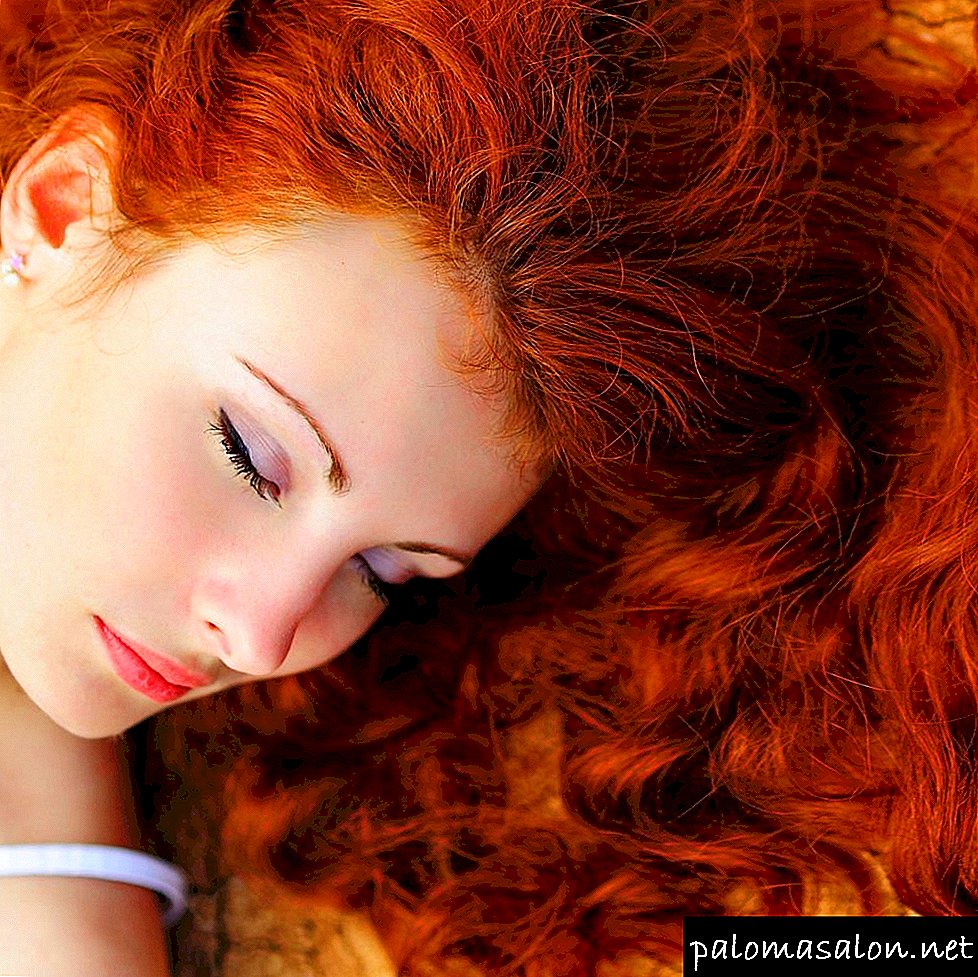
Possible harm
Not all trichologists are unanimous in opinions about the use of henna for hair. Disagreements have emerged after a recent scientific study of the lawsonia inermis plant in some regions for genotoxicity. And although the results concluded that the henna applied mehendi patterns and the frequency of leukemia in women in Central Asia, this cast a shadow over other areas of henna use.
Excessive fascination with henna masks can really inflict harm to hair:
- To dry. The opposite effect of drying - if the hair is initially prone to breakage, losing moisture, it will generally look like hard straw, will lose elasticity,
- Straighten. The ladies who have dyed their hair with henna after a perm have faced an interesting effect - the curls are partially straightened, which looks at least sloppy,
- Not suitable for hair with gray hair. Even a small percentage of gray hair will be noticeable due to uneven staining,
- Not suitable for blondes. Having decided to drastically change the image, having painted the light strands in a deep red, give preference to other dyes, otherwise you will get an orange tint. Of course, treatment with a colorless taboo does not apply,
- Misses the tone. The most frequent harm from the use of henna - a spoiled mood. The color can go green or gray, it's hard to fix. If you have previously dyed your hair with paint, wait at least 2 months before applying henna. Better yet, grow natural color completely,
- Henna is difficult to remove from the hair. The annoying tone will not work just to paint over, you will also have to wait 2-3 months.
Before trying staining with a natural dye, better consult with trichologist - The doctor will express his opinion on the condition of the hair and the feasibility of treatment. In any case, it is recommended to purchase only a quality product in a specialty store.
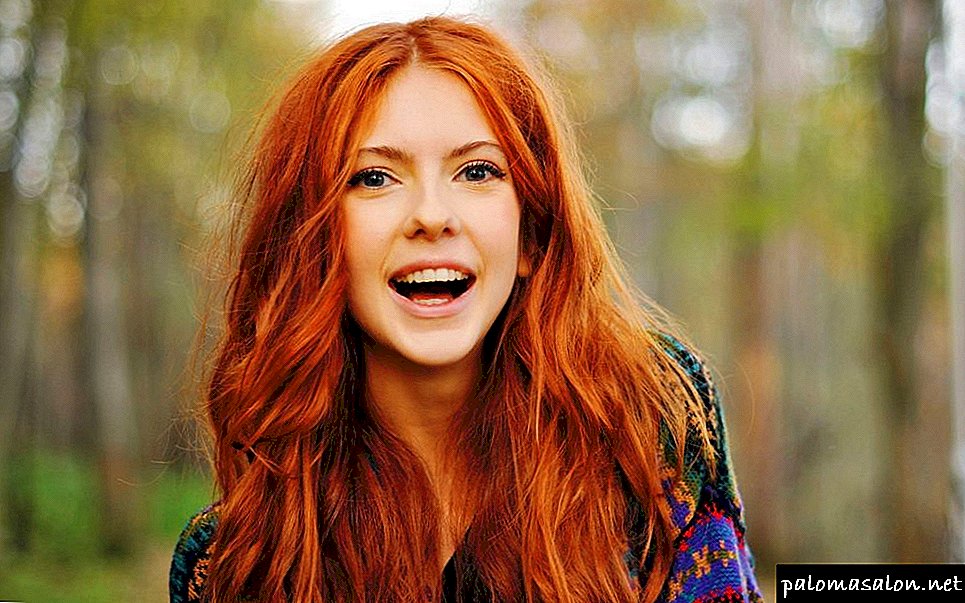
How to use henna
If you decide to dye your hair with henna or make a mask or a mask for her, please note that you will need an unusually long time - working with natural dye requires special preparation. We describe the process in stages:
- Preparation of the mixture. In order for the dyeing to be successful, it is necessary to release the dye from henna — henatonic acid. To do this, pour the vegetable powder into a non-metallic bowl, pour warm water over it, leave for 5-6 hours. Attempts to speed up the reaction, filling the raw material with hot water, are doomed to failure: only the air temperature is of importance in the room — if it reaches + 35C, the mixture will be ready in 2 hours,
- Drawing. Henna is applied to pre-washed hair - wet or dry, it does not matter much, it is a matter of personal preference. It is convenient to apply with an ordinary paint brush, and then comb it with a rare comb for even distribution,
- Warming. When all the locks are thickly covered with henna, you should wrap the head with polyethylene so that the mixture does not dry out. Put a hat on top or wind a towel - the dye needs warmth.
- Expectation. The exposure time of henna to get a rich shade depends on the original hair color: brunettes will need to wait at least 2 hours, brown-haired ladies will have 1.5,
- Flushing passes in two stages. First, pour some warm water into the basin and lower your head into it. Use your hands to wash the main henna from your hair. Now move under the switched on faucet or shower, remove the remnants of the dye. The water flowing from the strand should be colorless. It is not recommended to use shampoo in order not to stop the oxidation reaction - it can last for another couple of days, and the color will become deeper, more even. Therefore, do not wash your hair at least a day.
Colorless henna insist about an hour, and kept under the cap for the same amount. To increase the benefits of the procedure, add egg yolk to the mask or a few drops of burdock oil. Heated kefir, used to infuse instead of water, will minimize the harm of drying. After shampooing, use a moisturizing balm.

What can be added to henna
By mixing some ingredients into the pan with henna, you can protect your hair from possible harm or affect the shade:
- Decoction of herbs. Use them instead of water when preparing the mixture, and the hair will receive additional nutrition. Note that chamomile will lighten strands, harsh will give a red tint, black tea or coffee will lead the color to a chestnut gamut,
- Oils. Burdock, peach, flaxseed - these oils will provide a head of hair smoothness and shine, prevent overdrying. Also put in your favorite essential oil mixture - bergamot, rose, orange will lift your spirits, mint will relax,
- Milk products. They are introduced into the finished henna heated to room temperature - a cold product can curl if the mixture is hot. Kefir and sour milk moisturize, sour cream nourishes,
- Egg yolks or honey. The degree of benefit for the hair from them is about the same - both products will give shine, volume, will serve as a source of vitamins, nutrients,
- Basma. It is also a powerful natural dye, which in its pure form gives the strands a deep black color. Mixing henna and basma in different proportions, you can get many shades of a dark scale - for example, as in the photo.
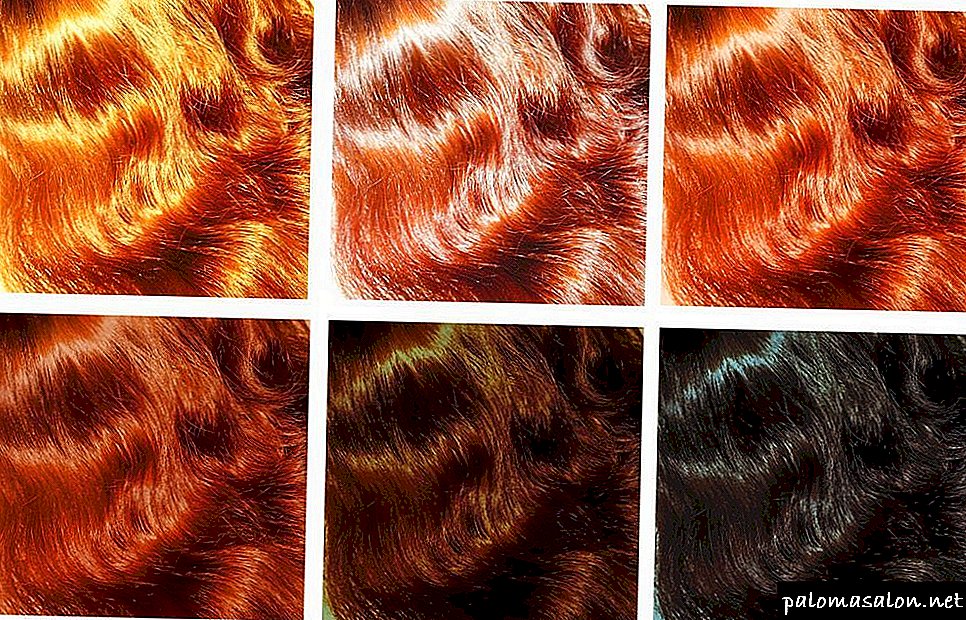
Many trichologists are of the opinion that the use of henna for hair significantly exceeds the risk of possible harm, but the result depends on the specific situation: the effect is exerted by the original shade, hormones, and the quality of the raw materials.
Under the conditions of crisis, it is quite difficult to diversify hair care .. And I also have the concept of "care" and the necessary high-quality coloring. Then this budget tool comes to the rescue. And believe me, this henna is no worse than the expensive Lady Henna. (Photo)
Good day to all))))
Met once with a girlfriend, talking for hair care. She is an avid lover of any creative, in a short time can be in different colors, she knows everything about her hair .. Or almost everything.
I recently decided to return to the henna dyeing. For the winter, I managed to restore damaged hair, to heal healthy — in general, now I am happy with the hair. Well, how much patience is needed so to dye your hair ".. There is an element of truth in her words — he who paints her hair with herbal dyes — knows how difficult it is — brew grass, cool, apply, then stand for a while. Most often this is not one an hour .. And sit with thick porridge on your head plus a warming hood is a I can tell you neprosto..Osobenno summer, zharu..Povedav me about his recent him.okrashivanii, Natasha added sadly, "How kraska.Skoro risen, probably, and I'll have to pass on your cheap bags" "
I can’t agree with that. Everyone knows Iranian henna, remember these bags, even they now cost 20 rubles against the autumn price — 11 rubles. I don’t use Iranian now. I found a good substitute. This is Indian henna .. And now it’s not worth it 170 p, and all 250 in retail. IT is cheaper, but add postage. What to say about Ayurvedic paints based on henna-Herbal Hair Dye Lady Henna and Herbal Hair Dye Aasha herbals Their price is now unreasonably high. And add here oils .. personally, I do not dye without them .. Henna dries hair .. And that the output is Ayurv The edicious care is in no way inferior to the profu. And in terms of dodge, it doesn’t compare at all. But the result is good.
But there is a budget exit. And not bad enough. And you know, I will not disdain this henna, I will buy it more than once. If there is no difference, why pay more?
I will tell you about my recent experience with Indian henna from Phytocosmetics
Yesterday I saw a bag of Indian henna for 18 rubles in a newsstand.
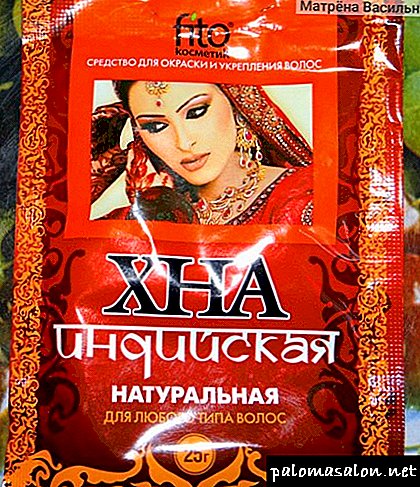
At my disposal bags of 25 grams.

A plastic bag, brilliantly rustling with an Indian girl. Fito Cosmetics position their henna as natural. Although made in Russia. That is raw materials imported, and our manufacturer .. Because the price is so, now quite biting ..
On the reverse side of the package presents all the information.
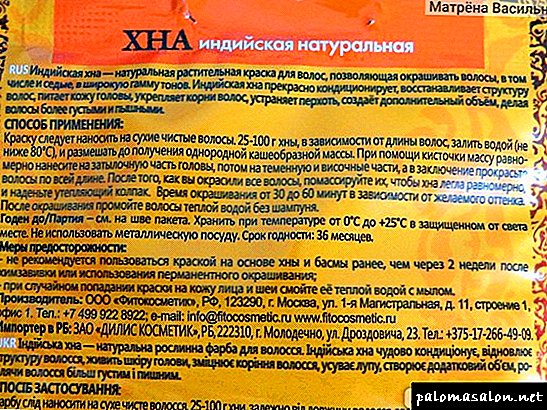
Indian henna is a natural herbal hair dye that allows you to dye your hair, including gray hair, in a wide range of tones. Indian henna perfectly conditions, restores the hair structure, nourishes the scalp, strengthens the hair roots, eliminates dandruff and creates additional volume, making the hair thicker and lush!
TOCutting should be applied to dry, clean hair. 25-100 g of henna, depending on the length of the hair, pour water (t not less than 80 ° C) and stir until a homogeneous, mushy mass. Using a brush, apply a mass evenly on the back of the head, then on the parietal and temporal parts, and finally paint the hair over the entire length. After you have dyed all the hair, massage it so that the henna lies evenly. Wear a warming cap. Dyeing time from 30 to 60 minutes, depending on the desired shade. After dyeing, rinse hair with warm water without shampoo.
The composition of the product is only 100% henna, without any additives. The product has passed voluntary certification.

The manufacturer warns us that it is not recommended to use henna earlier than 2 weeks after chemical dyeing or chemical waving. It is right-the result can be unpredictable. If you decide to dye with herbal dyes, remember that a return to professional Paints for henna can be fraught. Lightening for henna can also lead to disastrous results, and if the basma is 100% green hair. I know such a girl. She simply spoiled her hair. Once upon a time I switched from henna to dyeing chemical paint. Changed Chen postepenno.I something long enough difference between dyed with henna long and regrown roots, already stained with paint, I was cut off zametna.Postepenno length.
The grinding of this henna does not compare with the Indian LADY HENNA. There is grinding practically in flour, here krupnovat. good grind



The smell of henna is normal, grassy, henna. It is also welded without any problems. This time, again, the constant companion of my coloring is cocoa butter

I applied, traditionally wrapped my head in a warm cap .. I always have a rather long 3-4 hours or even 5 hours. I don’t leave henna overnight, I don’t get enough sleep with it, and the saturation of the shade with such a difference time I don't see socks with the result of 3-4 hours.
This henna was washed off not bad, but still it is not Lady Henna. There is practically no rubbish from that, only colored water. With this, of course, there is more sand, but in comparison with Iranian, it clearly wins. grinding
What do you want to say about the coloring itself?
I dyed my hair very qualitatively, the color turned out to be identical to Lady Henna, although the original base was darker. Henna is well-pigmented — the skin where the dye came in is now orange. It can be easily washed off with a shampoo in a couple of days. wash the henna particles out of the hair, and moisturize them a little. Just like the aforementioned henna, the tips of the hair are sealed, they are in a very tidy condition. The hair shine from this henna is no less.

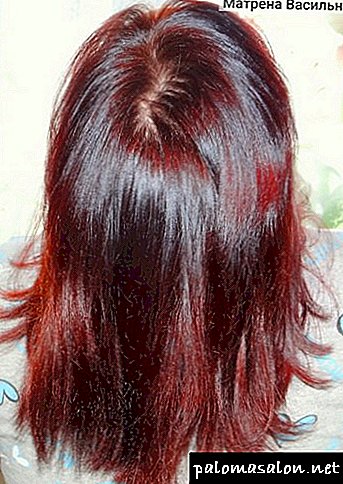
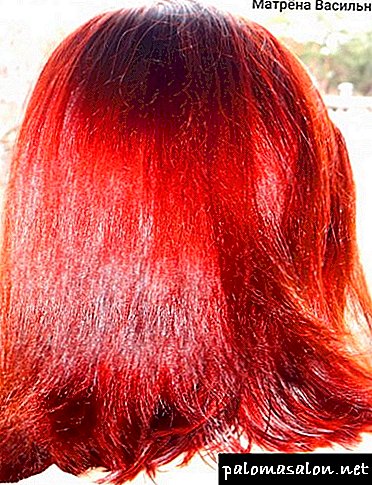

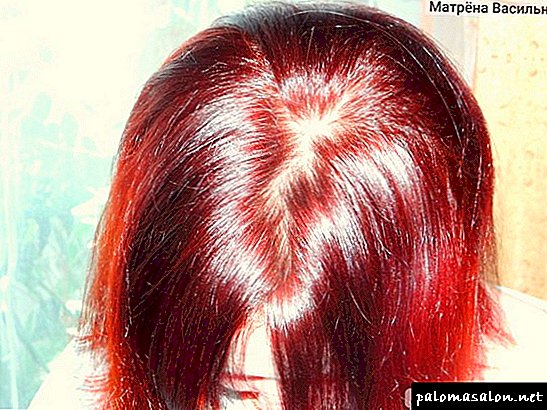
Hence the conclusion is a good budget henna, a good replacement for a more expensive product. In the conditions of the crisis in the country, I think it will perfectly help in hair care, it will help to make hair beautiful, shiny and well-groomed.
Thanks for attention.
Do not be afraid to experiment)))) And stay beautiful)
I-Olya, and to me on you))))
Herbal dyes and blends for healthy hair.
Performance technique
Should I do a perm for the hair, if there are more gentle methods? Biowave is the best choice. Any variety is performed on almost the same technology. You can even create such curls at home. For their formation it is necessary to prepare:
- sponge
- capacity,
- gloves,
- comb,
- bobbins or hair curlers
- cap for insulation during the aging of the composition.
The procedure itself is performed in the same way as classical chemistry. First, choose the composition that is suitable for the original structure and density of the strands. Then wash the head with a special shampoo, which promotes the opening of the cuticle. Twist the strands on the curlers and process the selected set of drugs. Stand a certain time. As well as after chemistry, wash off the composition and put a fixative.
How to care after curling
To ensure a lasting effect, it is important to follow the rules for the care of curls. After applying the composition, as well as after chemistry, you should not wash your hair and use styling products. Wait 2 weeks before painting or highlighting.
If you follow these simple tips, you can save the effect for a long time. At the same time, unlike chemistry, hair damage is excluded. There will be no split ends and a washcloth effect on the head.
Kostyuzhev Artyom Sergeevich
Psychotherapist, sexologist. Specialist from the website b17.ru
- November 26, 2011, 12:06
And what actually kills hair ?? I do not understand
- November 26, 2011, 12:13
- November 26, 2011, 12:13
Probably the action of the type of silicones. Hair is filled, then breaks off at the root. So, Author?
- November 26, 2011, 12:13
that is, you did not know all this before? I think everyone knows that
- November 26, 2011, 12:16
And the essence is something that is not told.
- November 26, 2011, 12:16
Author, you wanted to write that the paint on henna can not? It was possible and shorter) And on the subject, I, a natural blonde, was painted with henna, her hair became thicker. Henna is washed off gradually, so it grew a native color without problems. Now add colorless henna to the mask.
- November 26, 2011, 12:16
The author wanted to say that he painted with henna, knowing that soon she would want to change the color, and chemical dyes do not take henna. I think those who like to change color know that henna is not used in this case.
- November 26, 2011, 12:17
Then a question. What is more harmful for hair: to paint them with ordinary paint with ammonia or henna?
- November 26, 2011, 12:23
Henna dries her hair. She doesn't paint over her hair. But otherwise, there are no problems with her. Well, it is problematic to repaint in a different tone after that, and don't dream about lightening.
- November 26, 2011, 12:33
Henna paints gray hair in combination with basma, overdrying can be avoided by adding olive oil to the dye mixture.
- November 26, 2011, 12:39
What nonsense! Henna is very useful for hair, restores, strengthens, changes the shade of hair. I have been using it for a long time, but I haven’t been buying in Russia for a long time, completely fake. My natural brown hair, it turns out with a copper shimmer. The daughter began to use, she has light chestnut, now they give me a golden reddish brown. We paint ourselves only in the salon, the hair itself can not cope and will be uneven, the hair below the shoulders and thick
- November 26, 2011, 12:41
Henna paints gray hair in combination with basma, overdrying can be avoided by adding olive oil to the dye mixture.
Your tex
Then this oil should be washed out for 3 hours. She does not use gray hair, everyone knows that, so why waste time?
- November 26, 2011, 13:26
For all nations, henna with basma repaints gray hair, and at 12 post it does not repaint. Here is a mystery.
Author, use colorless henna, growing natural color, and you will be happy.
- November 26, 2011, 13:27
Author, you wanted to write that the paint on henna can not? It was possible and shorter) And on the subject, I, a natural blonde, was painted with henna, her hair became thicker. Henna is washed off gradually, so it grew a native color without problems. Now add colorless henna to the mask.
+1000
I don't use artificial hairs - so henna is perfect for me and it really makes the hair better.
- November 26, 2011, 13:28
Then a question. What is more harmful for hair: to paint them with ordinary paint with ammonia or henna?
ha ha ha _))))))))))))) That's it.
- November 26, 2011, 13:42
Does colorless henna also strengthen and thicken hair, like normal hair?
- November 26, 2011, 14:30
Henna hair becomes hard and brittle
This is not the same as strengthening and thickening.
Related topics
- November 26, 2011, 15:42
Henna paints gray hair in combination with basma, overdrying can be avoided by adding olive oil to the dye mixture.
Does not paint over, at least when there is a lot of gray hair
- November 26, 2011, 15:44
Henna hair becomes hard and brittle
This is not the same as strengthening and thickening.
Come on, they don't become hard and brittle. I strengthened the colorless year. The hair becomes a bit thicker, for me it’s better than soft, thin, poorly fit, and not brittle, less greasy. you will be both paint and henna, it was necessary to refuse from henna
- November 26, 2011, 15:47
For all nations, henna with basma repaints gray hair, and at 12 post it does not repaint. Here is a mystery.
Author, use colorless henna, growing natural color, and you will be happy.
I also do not paint over When in Lash wanted to buy, too, they said they did not paint over
- November 26, 2011, 15:56
I don't like henna either, when she dyed her hair, and henna + basma also painted. The color turns out to be some kind of old woman, ugly, it is very difficult to wash off, often with hair, but I never saw some magic healing effect, although I used it often. In short, she stopped bothering and began to paint with colors. And nothing terrible happened to the hair
- November 26, 2011, 16:14
he year was painted with henna - horror hair became dry and brittle, gray hair was painted a little but still not as much as we wanted
- November 26, 2011, 16:59
EzhovOf henna hair becomes hard and brittle
And this is not the same as fortification and thickening. Yes, all right, they do not become hard and brittle. I strengthened the colorless year. The hair becomes a little thicker, for me it is better soft, thin, bad fit, and not brittle, less greasy. there was no shine, and then you would not go gray and paint and henna, had to refuse from henna
What do you think due to what hair seem thicker?
Due to the fact that henna rykryvaya scales and part of it falls under them
This violates the hair structure, creating only the illusion of strengthening
- November 26, 2011, 17:55
Blessed is the mother, admins remove the nasty white frog, when it arises, everything starts to slow down.
- November 26, 2011, 18:01
The author, what can you offer? paint Shpartskopf or something else? You think that this is a good way out.
- November 26, 2011, 10:39
The author, what can you offer? paint Shpartskopf or something else? You think that this is a good way out.
Your text Why does the author have to offer you something ?! Everyone has their own brains and decide what to use. She just shared with you information for consideration.
- November 26, 2011, 23:10
First, I ask you to pay attention to the name, where I indicated that henna is only an indirect way to kill hair), however, there are eyewitnesses that it’s a direct one, it helps someone, on the contrary, it dries hair and makes them brittle. Also not surprised that a series of women came running into the subject with shouts - “bullshit, chtol chemistry is better”? I repeat, earlier I would join you. Because it was a fool)
- November 26, 2011, 23:16
Here is my story, quite a trivial one for a woman who painted with henna) So, by nature I’m a light brown-haired woman, but at one time it seemed to me that darker hair is mine, I always knew that I couldn’t be blonde, I confidently chose henna and basma to achieve the desired color, the shades were excellent and natural, unlike the purchase of paints. There were only 4 drawbacks - 1) the smell is not too pleasant, to put it mildly, to an amateur 2) to achieve the desired result, I had to keep this wet mess all night, for which my chronic sinusitis said thank you and bloomed like flowers in spring 3) the color did not always lie flat and the basma was washed out fairly quickly, while the hair acquired a blasted reddish tint 4) the stained bathroom, since the application of henna is still a gomorrho. Of the merits, I note - a beautiful (in my case, eggplant, but natural, shade), which lasted about 3 weeks and shiny, strong hair, for someone else, the price, I think. But all the same fussing with it was too much, because one day I decided to turn my eyes to hair dyes and, oh, a miracle, I saw 'my own' shade - a frosty chestnut l'oreal sublime mousse. At first she was afraid to dye, but the result exceeded my expectations, my hair was just as strong, the color I needed, only the dyeing procedure took 40 minutes and not the day as before. It was painted like that for several months, but I began to notice that the color increasingly began to resemble black, in general, I liked all the same, until one friend, in a friendly way, asked if I had Chinese or Japanese in my family))) to be honest, it hurt me so much that I looked at myself and my hair color in a new way)), as well as my photos, in spite of a purely European appearance and large (almost round heh) bright eyes, in the photos I looked like the heroine of Japanese horror films, and the color of her hair seemed cheap to me, too alone otonnym.
- November 26, 2011, 23:17
I decided to go back to my natural environment, bought a washer, everything went fine, my head shone with a bright bright red tone, but my native chestnut was already looking through, but I was going to paint over the case anyway, in a tone with the most full-bodied chestnut, but with tone 6. And what? Instead of a chestnut, the black-haired Chinese again looked at me, however, I knew that the colors give a tone that is darker, but not by 3-4 tones. Therefore, the experiment was repeated, now with a clarifier and paint a dark blond. It was at the stage of clarification that I realized what a fool I was that succumbed to the temptation to use henna. My bleached hair complemented brightly swampy strands and two huge green spots on the sides. I don’t understand why the greens showed up only in places, but it wasn’t possible to cut it out, nothing could be done to it. Nevertheless, I decided to paint it from above with a dark blond - it turned out to be almost my natural light chestnut, BUT with green spots and in some places - with a nasty red tint. As a result, I have no choice but to walk almost Chinese again, and at the same time I don’t have to try, all ammonia tones from 6 and below, turn into almost black color on my hair, which I now try to wash to chestnut by all means dark but chestnut! Paint tones 7 and above is also not an option - because of the green. Salon is also not an option, not a single normal master will undertake me because of this henna, and those who simply want to cash in without 'guaranteeing results'. I'd rather be at home, at least I know what I put on myself. Ammonia-free paints even try to useless, they do not take 'favorite' greens from henna! So I beg you, girls, do not mess with henna, olive oil is a better alternative for strengthening hair, and tinted shampoos and non-ammonia dyes almost do not harm the hair. Sorry for so many books, I just would not want someone to repeat my (and many others) sad experience!
- November 26, 2011, 23:22
BUT with green spots and in some places - a nasty red tint. As a result, I have no choice but to walk almost Chinese again, and at the same time I don’t have to try, all ammonia tones from 6 and below, turn into almost black color on my hair, which I now try to wash to chestnut by all means dark but chestnut! Paint tones 7 and above is also not an option - because of the green. Salon is also not an option, not a single normal master will undertake me because of this henna, and those who simply want to cash in without 'guaranteeing results'. I'd rather be at home, at least I know what I put on myself. Ammonia-free paints even try to useless, they do not take 'favorite' greens from henna! So I beg you, girls, do not mess with henna, olive oil is a better alternative for strengthening hair, and tinted shampoos and non-ammonia dyes almost do not harm the hair. Sorry for so many books, I just would not want someone to repeat my (and many others) sad experience! / Quote
It turns out that you just can not get rid of the color that gave henna? I thought henna was bad for hair.
- November 26, 2011, 23:25
Regarding the colors, to be honest, I liked sublime mousse, he didn't spoil my hair at all, although it stinks of ammonia notably! The disadvantage is that there are few shades, and so good paint, lays down equally and paints well, the only thing with repeated dyeing is to paint only the roots (I was just too lazy to bother, I painted the whole head), and still hold for 20 minutes, not 30-35. But everything is individual, after someone visiting the most expensive salon, hair is strewed, and after pallet everything is gorgeous. Therefore, it is necessary to try, after someone henna has brittle hair), but the consequences of using chemistry are easier to remove) even trim if necessary, then dried ends, and not green spots from the top)
- November 26, 2011, 23:30
Regarding the colors, to be honest, I liked sublime mousse, he didn't spoil my hair at all, although it stinks of ammonia notably! The disadvantage is that there are few shades, and so good paint, lays down equally and paints well, the only thing with repeated dyeing is to paint only the roots (I was just too lazy to bother, I painted the whole head), and still hold for 20 minutes, not 30-35. But everything is individual, after someone visiting the most expensive salon, hair is strewed, and after pallet everything is gorgeous. Therefore, it is necessary to try, after someone henna has brittle hair), but the consequences of using chemistry are easier to remove) even trim if necessary, then dried ends, and not green spots from the top)
Just chemical paints are not suitable for everyone. Give an allergy.
- November 26, 2011, 23:40
Green extinguishes red. Red is 5ka (I can lie and forget the number — I forgot it. But the Internet is our best friend, they should see it) after a dot in the PROFESSIONAL PAINT. Karoch, you go to the magician. "Everything for the hairdresser" and buy, for example Igor (does not fail with shades) 6.5 and oxide 6%. It's all about, and red in igora, in my opinion 8-ka. But the idea is clear?
- November 26, 2011, 23:55
Green extinguishes red.
Yes, thank you) Since I still continue to experiment, the advice will come in handy to me) Only I still have a problem that I want to extinguish not only the greens, but also the redhead - all these are the consequences of henna) Does it seem to be quenched with blue?
olgusha


